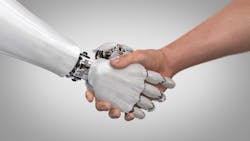“Hiring” the Right Machine for the Job
Without realizing it, people are constantly “hiring” and “firing” products. When was the last time you hired a product to do a job? Was the product you hired engineered for the job, or did you use it in a way the manufacturer didn’t intend?
Thinking about products as things hired to do a job is a theory developed by the late Harvard Business School Professor Clayton Christensen. Christensen dubbed this the “jobs to be done,” or JTBD, framework. JTBD is a way to learn what motivates a customer to buy.
When my colleague and I were introduced to the JTBD framework, one example we were given was a developer who built a remarkably beautiful senior-living development in Florida. The location was great. And the developer’s plan, of course, was that the development’s amenities and layout would have people fighting to buy in. Yet, the developer struggled to sell units. The developer’s recipe was failing, and he didn’t know why.
Unlock the Story Behind the Job
To uncover a customer’s underlying motivation to buy, JTBD taught us to find a range of people who’ve hired (or fired) the product and facilitate a discussion with them. The discussion unlocks the story about their purchasing decision. Tapping into the customers’ view of the product can also help engineers and product managers gain insight about machine specifications and designs. We know this to be true because our company recently engaged on a project using JTBD.
Our client makes a variety of pumps and allowed us to interview some of their customers to understand why they purchased a sump pump, how they used the pump, and where the product fell short. After the conversations, we confidently knew why these customers were hiring the existing sump pump as well as ways it didn’t measure up, which created an opportunity to build a next-generation pump for our client. The insight from these customer discussions clarified our recommendations for engineering and designing a smart, IoT-enabled sump pump.
When we told our client that we had pinpointed each person’s struggling moment and what led them to buy, they agreed with our recommendations not only for a new UI design but also what potential buyers felt the new product needed to succeed.
How Does JTBD Work?
Getting insight begins by interviewing customers and asking them what was happening in their lives before they bought a product. Without leading a customer, the interviewer should ask when the buyer first thought about their “job to be done.” A customer will describe the situation that arose, and how they began looking, at first passively but then actively, for a solution. The interviewer then asks if the customer was satisfied with the purchase and whether the product solved the customer’s struggling moment.
READ MORE: Product Development Starts with Proof of Concept
Some manufacturers will say they already know why their customers buy their product and note they’ve done market research. The challenge for engineers supporting manufacturers like these is vetting assumptions and mapping their customers’ experience to a problem, or job to be done. What if a customer initially uses the manufacturer’s product but has since turned elsewhere? Or what if the customer uses the product in a way other than how the manufacturer designed it? The JTBD framework uncovers those situations.
Using JTBD, we interviewed 12 sump pump users. Some might say that’s not a statistically relevant set. Yet, those 12 people had very similar stories, and that’s how we segmented what each job was. For example, we learned many interviewees had a traumatizing event in the form of a flooded basement. The group who had experienced floods in their basement represented one set of customers, but by interviewing all 12 we uncovered two other groups of customers who were previously unknown to us and our customer.
This helped us design the new sump pump’s features, a smartphone app and a full experience around the needs of each customer group. The interviews don’t have to end with an initial set of users. As you find new, unmet needs (or interesting patterns among users), there’s an opportunity to develop new features and maybe even the next generation of a product.
As for that Florida developer, he ultimately learned people weren’t moving into his complex because the dining room in each unit was too small. Even though the retirees looked to downsize, they still wanted enough room in their Florida condos to seat their whole family around a table for holiday meals. If they didn’t have the room, the retirees worried their children and grandchildren wouldn’t come to visit.
As for us, the sump pump we worked on is now rolling out to customers. We’ll be following up with new users to learn what we got right, missed and might further innovate. Designers and engineers can gain a lot of insight simply by asking a customer to, “Tell me a little more about your experience.”
Adam Justice is CEO of Grid Connect, Inc. and co-host of The Smart Home Show podcast. Anthony Linder is vice president of Operations for Grid Connect, Inc. Linder earned his bachelor’s degree from Tarleton State University, and holds PMP and CSM certifications.
